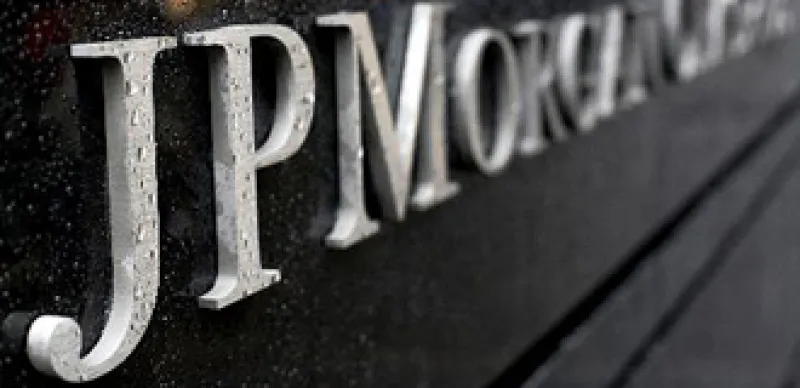Alarmed by the magnitude of JPMorgan Chase’s $20 billion loan to AT&T, Moody’s warned on Monday that the transaction is a “credit negative” for the second-largest U.S. lender.
The bank offered the bridge loan to help the telecom carrier finance its $39 billion stock and cash acquisition of T-Mobile, Deutsche Telekom’s U.S. wireless business. JPMorgan also served as AT&T’s investment banker on the deal, which was announced March 20.
“JPM’s large AT&T commitment highlights how the risk profile of a capital markets business can change quickly,” Moody's analyst Sean Jones said Monday in a note.
Moody’s said the loan constituted 17 percent of the bank’s tier 1 capital, which is an unusually large concentration of risk. The credit-rating agency said that if JPMorgan’s bridge loan helps it win a mandate to finance AT&T’s long-term debt, it may encourage other banks to take similar risks.
“The tail risk scenario is that the loan cannot be sold and becomes non-performing,” Jones told Bloomberg News.
The Moody’s warning on AT&T is just the latest sign that big U.S. banks, so recently mired in toxic debt and beholden to the U.S. government for massive bailouts, have shaken off the ill-effects of the financial crisis. They are back in the business of taking risk. Citi, JPMorgan Chase, and Wells Fargo won regulatory approval this month to resume the payment of dividends. Citi announced a reverse 10 for 1 stock split that will lift its shares from the low single digit range. JPMorgan Chase and Wells will buy back shares.
Those measure might be welcome news for equity investors, although the performance of companies that have announced reverse stock splits is mixed. As the Wall Street Journal notes, such financial engineering can make it easier for institutions, barred from holding a stake in a company that trades below a certain price, to buy shares. On the other hand, a higher stock price can make it easier for short sellers to enter the stock.
None of this is particularly welcome news to bondholders, however. On Monday, Barclays Capital lowered its rating on Wells Fargo and JPMorgan Chase to marketweight from overweight.
“We believe these actions, which were allowed following the Federal Reserve’s Comprehensive Capital Analysis and Review, are indicative of the end of a two-year capital building phase undertaken by U.S. banks,” analyst Jonathan Glionna said in a report. He said investors might find more value in Swiss banks UBS and Credit Suisse, which are continuing to build capital, will have higher capital levels mandated by Basel III rules, and possibly will receive more government support than U.S. institutions.
“We recognize that capital distribution still remains low by certain measures at JPMorgan and Wells Fargo, but these developments indicate a possible inflection point for them, with limited upside for bondholders,” he said.
Tier 1 capital ratios, in the 8 to 10 percent range for the big U.S. banks, compare unfavorably to the 12 to 14 percent range expected for the Swiss banks. Both Swiss banks already have Tier 1 capital levels that exceed those of Wells Fargo and JPMorgan, and those levels are headed higher.
Basel III capital rules are global in nature, but are expected to be implemented in different fashion from country to country. Glionna expects a more lenient interpretation in the U.S. Bondholders are taking note, too.






